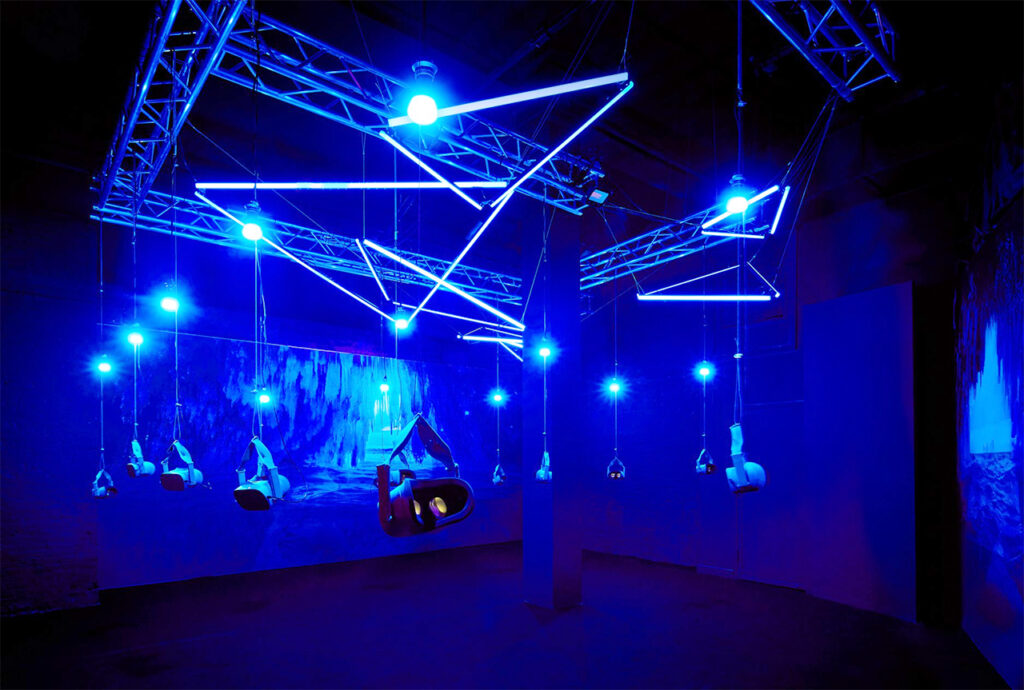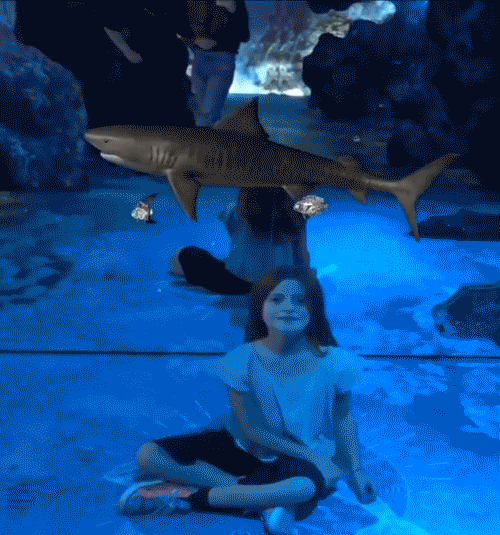As environmental issues grow in urgency, institutions and companies are seeing the potential creative technologies present in highlighting eco-causes from fragile ecologies to species extinction. Arcadia Earth is one venue that’s been integrating technology into their immersive exhibitions.
Opened in 2018, the self-funded company, now with locations in New York and Las Vegas, tackles environmental preservation themes in upcycled installations made with materials such as plastic bags, toilet paper rolls salvaged from hotels, and pages from books discarded by the New York Public Library. Its 15 rooms are further built with AR and VR integrations — available through a custom-built app and headsets — which boost the first-person interactivity of its exhibits, making for a multi-sensory experience. Most recently, Arcadia Earth has deepened its XR offering with the adoption of Microsoft’s HoloLens.
What happened

In addition to its new XR experience, Arcadia Earth also features other tech integrations, including a Wild Immersion room, where visitors can get up-close with endangered species in VR. Image: Arcadia Earth
Visitors to Arcadia Earth’s New York location can use one of the 30 available HoloLens headsets to explore a space newly equipped by 10,000 square-feet of AR holograms.
As they journey through the immersive exhibits guided by virtual arrows, visitors can engage in a “scavenger hunt” for AR jewels and unlock climate change trivia through the HoloLens. In a room focused on ocean ecology, visitors are greeted by swimming AR sharks and fish, some of which are caught in physically installed nets; visitors can “free” the AR fish through pinching gestures, which are picked up by the HoloLens.
Why it matters

Each of Arcadia Earth’s 15 rooms are equipped with AR holograms, bearing out the exhibit’s theme. Image: Arcadia Earth
According to the venue’s Founder Valentino Vettori, Arcadia’s Earth latest XR outing represents the largest consumer-facing experience to feature the HoloLens, which were formerly primarily used by medical professionals for training purposes (Microsoft is not an official sponsor of the exhibition). While the tech does make for an immersive viewing, it still has room for improvement: gestural functions like “grabbing” jewels or “pinching” fish take multiple attempts due to inconsistent room lighting.
But already, these digital technologies and tools are proving to be highly adaptable, particularly to tackle environmental issues. Projects such as the French National Museum of Natural History’s Revivre, Curatours’ Museum of Plastic 2121, and the Ethnological Museum of Berlin’s SwellAR variously use technologies including AR and VR to better highlight the climate emergency. They’re participatory experiences that inspire emotional reactions and hopefully, in turn, climate action.
What they said
“Today, we’ve just layered on new technology which is augmented reality… We want to inspire, inform, and activate people. You need to find new ways to inspire people.” — Valentino Vettori, Founder and Artist, Arcadia Earth



